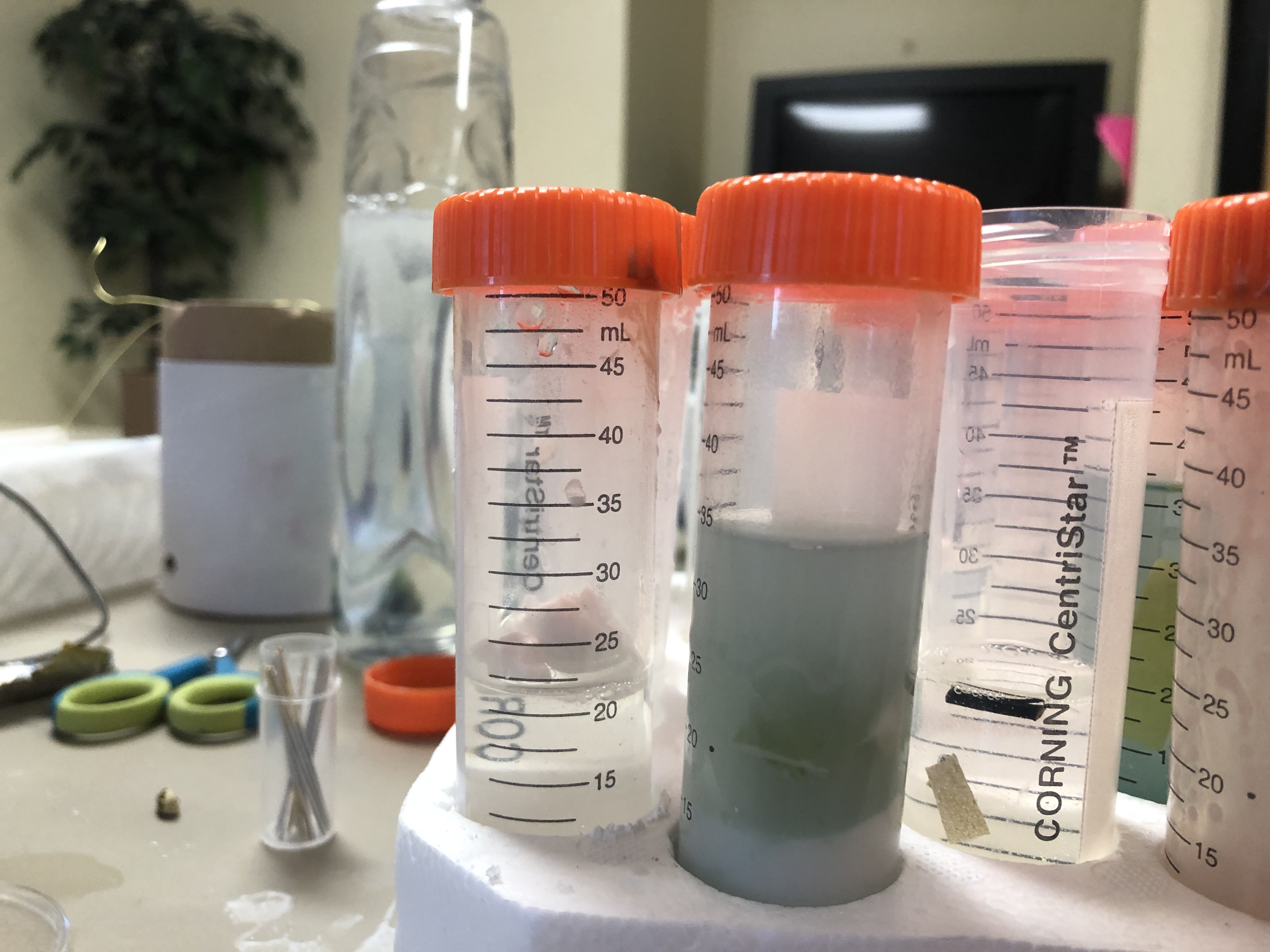CHEMISTRY
Chemistry is a very old science. People have always been interested in knowing how elements mix together, change, and separate back into the basic elements.
Before people knew about elements and compounds like hydrogen, oxygen and carbon, there were many theories about the basic elements.
In ancient Egypt, Greece and India people suggested that everything was made from five basic elements: air, water, earth, fire, and space. Think about how these things mix together and change each other: water evaporates into air; water puts out fire; fire boils water; water erodes rocks.
They had the basic idea that everything was made from basic elements, and that elements mix and change, but they didn’t know about atoms and molecules yet.
It is amazing to think about how many years of thinking and experimenting led up to modern chemistry.
Here are some kitchen chemistry experiments. You need:
- Test tubes or clear containers
- Warm water (It should feel kind of hot, about 110 degrees, but not burning hot.)
- Yeast and sugar
- Tea bags and tea cup
- Food coloring
- Balloon
- Sponges
- Sand or soil
- Scissors to cut the sponges into small pieces; also tweezers
- Paper towels to clean up
- Snack foods
[Project 1.] Put warm water, yeast and sugar into a bottle. If you have a balloon, you can cover the top of the bottle with a balloon. Set it aside.
[Project 2.] Put food coloring and water in a cup of water and put a slice of apple into it. Set it aside.
[Project 3.] Use warm water and a tea bag to make a cup of tea.
----------------------------------------------------
[Now, while waiting for your tea….]
|
(brief break, food, or extra activity)
|
OK – back to your experiments!
First question - -Has anything changed? These are pretty obvious experiments, but interesting. How did the yeast mixture change? How did the food coloring mixture change? How about the water plus tea bag? Do you think the elements in the mixture really changed into something new and different? Or did you just mix together some things, but each thing kept its basic qualities?
-------------------------------
Second question – can you unmix these mixtures?
[1.] Put some tea in a clear test tube
[2.] Put a piece of dry sponge in the top of an empty test tube, about a half-inch from the top.
[3.] Very slowly, pour some of the tea from one test tube through the sponge into the other test tube.
[4.] Compare the color of the mixtures.
[5.] Try inventing other filters. What about using filter paper or paper towels? Filter paper with some sand or dirt? What else would make a good filter?
[6.] Use the paper towels to clean up.
------
Congratulations! You are now a beginning chemist!
Next week we’ll talk about modern chemistry. We can start to think about how atoms combine to form molecules and how molecules react with other molecules or just bind with other molecules to make different types of reactions and mixtures.

